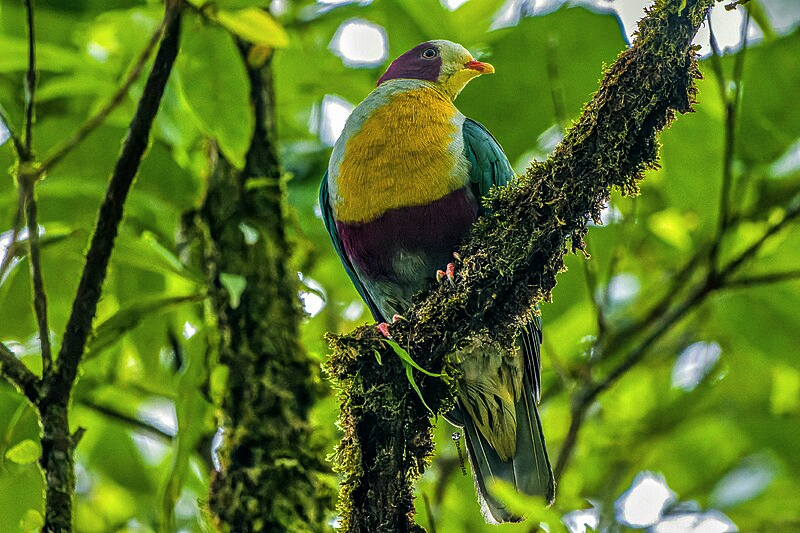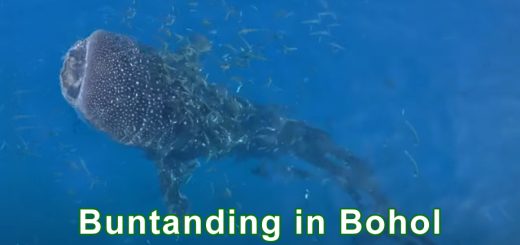Yellow-breasted Fruit Dove – A Colorful Jewel of the Philippine Forests

The Philippines is home to an extraordinary diversity of wildlife, and among its many avian treasures is the Yellow-breasted Fruit Dove (Ptilinopus solitarius). This stunning bird, known for its striking appearance and elusive nature, embodies the rich biodiversity of the archipelago. In this blog, we’ll explore the captivating world of the Yellow-breasted Fruit Dove, its role in the ecosystem, and the importance of protecting this endangered species and its rapidly disappearing habitat.
A Glimpse at the Yellow-breasted Fruit Dove
The Yellow-breasted Fruit Dove is a medium-sized bird with a distinctive and vibrant appearance. The male boasts a rich combination of green, yellow, and purple feathers that create a striking contrast. Its most notable feature is its bright yellow breast, which gives the bird its name, standing out against the deep green of its back and wings. The head is tinged with a soft purplish hue, while the belly is often a lighter, almost cream-colored shade. The female is slightly duller in color, with a more subdued yellowish-green hue, but still shares the same general coloration pattern.
Measuring around 28 to 30 cm in length, the Yellow-breasted Fruit Dove has a compact and stocky body that is adapted for life in the dense, tropical forests of the Philippines. It has a relatively short, blunt bill, ideal for plucking fruit from trees, and its plumage is both colorful and functional, offering excellent camouflage in the lush foliage of the forests.
Habitat and Distribution
The Yellow-breasted Fruit Dove is an endemic species to the Philippines, meaning it is found nowhere else in the world. Its distribution is limited to the lowland and montane forests of the country, primarily in the Visayas and Mindanao regions. This bird thrives in the dense, tropical rainforests of these islands, where it can find an abundance of its primary food source: fruit.
In particular, the Yellow-breasted Fruit Dove prefers habitats with mature forests that offer plenty of fruiting trees and shrubs. These habitats are often found in humid, coastal forests and the lower to mid-elevations of mountainous areas. Unfortunately, the forests that the dove inhabits are under increasing threat due to deforestation, agricultural expansion, and urban development.

Yellow-breasted Fruit Dove – Sapin-sapin
© Creative Commons | Author: EMMAN A. FORONDA
Ecological Role: The Fruit Dove as a Seed Disperser
The Yellow-breasted Fruit Dove plays a crucial role in maintaining the health of the ecosystems it inhabits. As its name suggests, the bird is a fruit eater, feeding primarily on a variety of fruits, including berries, figs, and other soft, fleshy fruits that grow in the dense forests. But beyond simply eating these fruits, the dove plays an essential ecological role as a seed disperser.
By consuming fruits and flying from tree to tree, the Yellow-breasted Fruit Dove inadvertently disperses the seeds of the plants it feeds on. This natural process helps to regenerate the forest and ensures the growth of new plants, maintaining the biodiversity of the ecosystem. As such, the dove contributes to the health of the forests, helping to sustain a cycle of life that benefits countless other species, from plants to insects to larger animals.
Its role as a seed disperser is especially important in tropical ecosystems, where the high level of biodiversity relies on such interactions to maintain the delicate balance of plant and animal life.
Feeding and Behavior
The Yellow-breasted Fruit Dove is primarily frugivorous, meaning it feeds mostly on fruits. It is known to consume a wide range of fruit types, with a particular preference for figs, which are abundant in the forests it inhabits. The bird is also known to occasionally feed on insects and other small invertebrates, though these make up a smaller portion of its diet.
This dove is mostly solitary or found in pairs, and it typically forages alone. It tends to remain high in the canopy of the forest, where it can feed in peace and avoid predators. The bird’s ability to fly silently through the dense foliage, coupled with its colorful plumage, makes it both a beautiful and somewhat elusive creature, often hard to spot in the wild.
The Yellow-breasted Fruit Dove’s call is described as a soft, low, cooing sound, which can often be heard echoing through the forest during the early morning or late afternoon hours. Despite its beautiful call, this species is generally very quiet and unobtrusive, blending seamlessly into its environment.
Conservation Status: Threatened by Habitat Loss
While the Yellow-breasted Fruit Dove is an integral part of its ecosystem, it faces significant threats to its survival. The species is currently classified as Endangered by the International Union for Conservation of Nature (IUCN). The primary threat to the dove is habitat loss, particularly deforestation in the Philippines. The country has one of the highest rates of deforestation in the world, with vast areas of primary forests being cleared for agricultural development, logging, and urban expansion.
The loss of forest cover directly impacts the Yellow-breasted Fruit Dove, as it relies on mature, fruiting trees for food and nesting sites. Deforestation not only reduces the availability of these vital resources but also fragments the dove’s habitat, making it harder for populations to find one another and reproduce.
In addition to habitat destruction, hunting and illegal trade also pose threats to the species, though these are not as significant as habitat loss. The birds are sometimes captured for the illegal pet trade, where their vibrant plumage makes them desirable to collectors.
Conservation Efforts: Protecting the Forests
Given its status as an endangered species, the Yellow-breasted Fruit Dove is the focus of several conservation initiatives in the Philippines. The Philippine government, along with local and international conservation groups, is working to protect the habitats of this and other endemic species through the establishment of protected areas and nature reserves. These reserves aim to safeguard critical habitats and prevent further encroachment by human activities.
Efforts to combat deforestation are also a key part of protecting the Yellow-breasted Fruit Dove’s habitat. Promoting sustainable forestry practices and supporting reforestation projects are essential to ensuring that the forests the dove depends on can recover and thrive in the future.
Additionally, public awareness and education play a crucial role in conservation. By raising awareness about the importance of protecting the forests and the wildlife that lives within them, conservationists hope to inspire greater protection for these habitats.
How You Can Help
While protecting the Yellow-breasted Fruit Dove requires large-scale efforts, there are several ways you can make a difference:
Support conservation organizations – Donate to or volunteer with organizations that work to protect wildlife and forests in the Philippines, such as the Philippine Eagle Foundation or the Biodiversity Management Bureau.
Sustainable tourism – If you’re visiting the Philippines, consider supporting ecotourism initiatives that promote conservation and raise awareness about endangered species.
Spread the word – Educate others about the importance of protecting the Yellow-breasted Fruit Dove and other endangered species. Every small effort can help generate awareness and inspire change.
A Jewel Worth Protecting
The Yellow-breasted Fruit Dove is a stunning example of the beauty and complexity of the Philippines’ natural world. As an endemic species, it holds a special place in the ecological fabric of the country, playing a crucial role in seed dispersal and forest regeneration. However, the species faces numerous challenges due to habitat loss and deforestation.
By supporting conservation efforts and raising awareness, we can help ensure that future generations will have the opportunity to witness the beauty of this remarkable bird and the forests it calls home. The protection of the Yellow-breasted Fruit Dove is not only important for the species itself but for the entire ecosystem that depends on the health of the Philippines’ forests. Let’s work together to preserve this jewel of the Philippines for years to come.
References:
https://en.wikipedia.org/wiki/Yellow-breasted_fruit_dove









